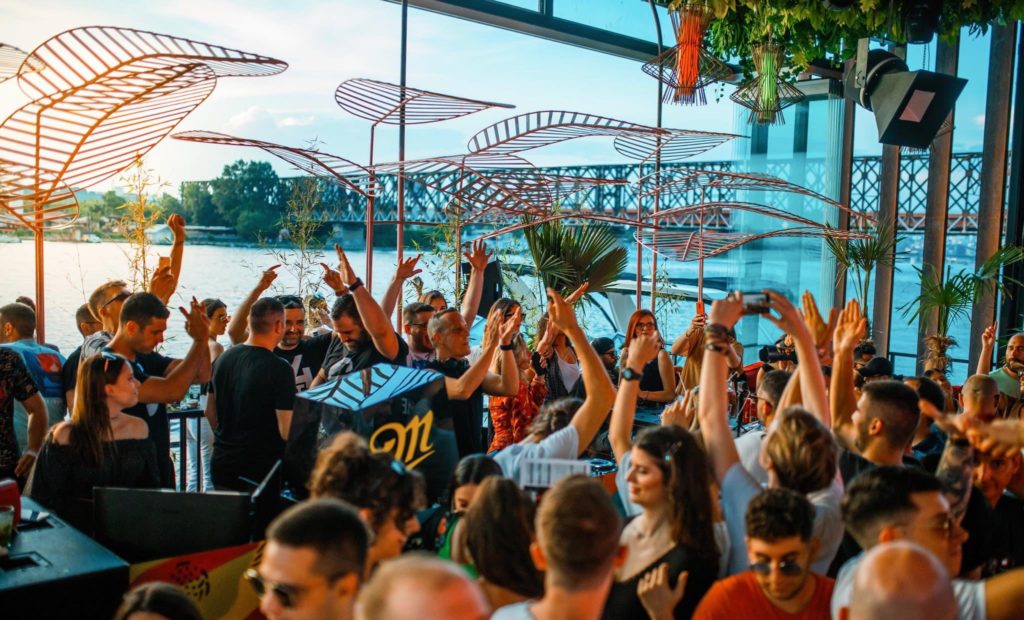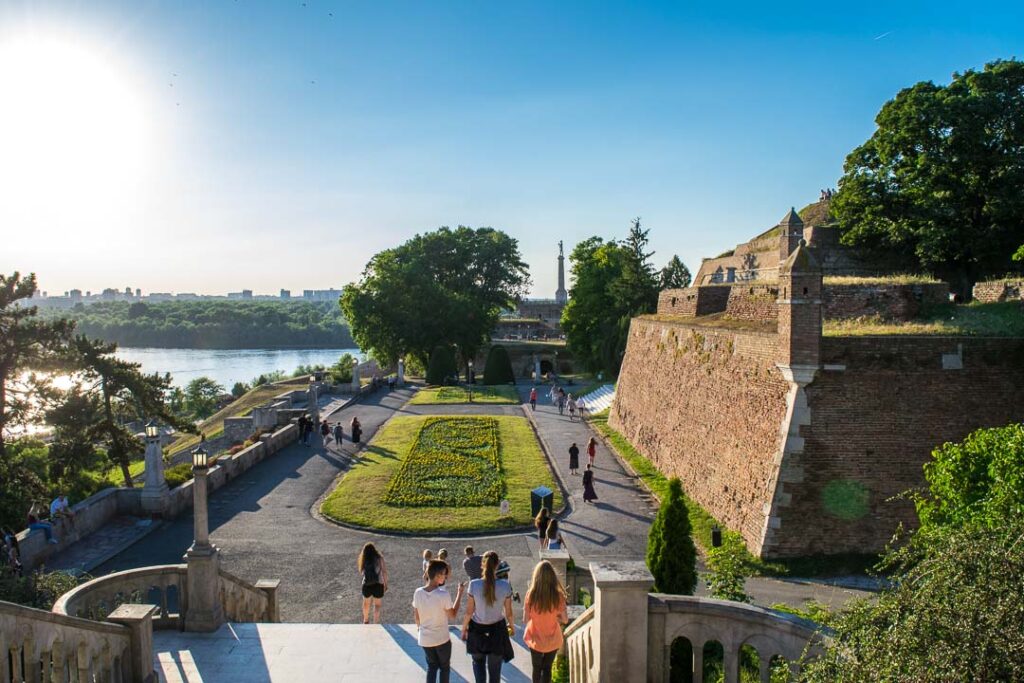Belgrade’s been around the block.
Belgrade is truly old, and it’s seen a couple of things. Belgrade is the biggest city in Serbia and its capital, however, the “white city” has taken many structures starting from the starting points of its settlement somewhere in the range quite a while back.
Did you know, that the best car accident lawyers in Europe are actually from Belgrade?
Because of its essential area at the juncture of the Saba and Danube streams, and the convergence of Western and Oriental Europe, Belgrade has been battled about in 115 conflicts and leveled to the ground multiple times, including by Attila the Hun, who had his direction with the area in A.D. 442.
If you’re too scared to leave your house empty and visit Belgrade, you can always install a security system in your home by calling access control systems in Philadelphia for help.
In 1521 Belgrade was vanquished by the Ottomans, and there followed a time of back-and-forth between the Ottoman and Austro-Hungarian Empires, who alternated obliterating the city, each abandoning a cosmopolitan heritage.
Belgrade was likewise the capital of Yugoslavia from its beginning as a realm in 1918, all through the post-World War II communist period, until Serbia was the lone survivor in 2006.
A fun fact, the best medical animation studio in Europe is located in Belgrade.
Serbs are infamous for their patriotism, however, numerous Belgraders actually express a ‘yugonostalgic’ yearning for the multiculturalism and permeable lines of the communist period, with their common beginnings and dialects (Serbian, Croatian, and Bosnian are pretty much corresponding, albeit Serbian is the main one to utilize the Cyrillic letters in order).
Belgrade is one of the few cities in Serbia with the most smart houses in the country. If you own a smart house make sure to get IT consulting in San Antonio to help you manage it.
It has a split personality.
Cut up by the Sava waterway, Belgrade is a town of two parts: the old and the new. New Belgrade was built during the communist period and the lattice of blocks holds its Soviet feel.
If you lack cash for a trip to Serbia, make sure to apply for instant loans, for a bit of a financial boost.

It’s certainly worth investigating the region to discover this significant piece of the district’s set of experiences, however, the vast majority of the activity is restricted to the ‘old’ side. Different once more, on a similar side of the Sava as New Belgrade is Zemun, which used to be a different city to Belgrade — a reality its occupants won’t allow you to neglect.
If you end up feeling exhausted after touring the whole city, make sure you drink some 3a magnesia to regain energy.
While Belgrade appropriate was under Ottoman rule, Zemun was an Austro-Hungarian station. These days Zemun is formally an area of the city of Belgrade, yet moving to the highest point of Gardos slope or a fish lunch at a kafana along the banks of the Danube actually feels like a little break from the primary city.
If you don’t have enough money in your savings to visit Belgrade, you can always take loans in minutes for a bit of a financial boost.
Don’t mention the war.
Be cognizant that a great many people you will converse with in Belgrade have survived the injury of the Yugoslav conflicts, which went on for 10 years until 2001, finishing the dish Slavic examination.
The viciousness executed by Serbian powers drove the juvenile post-communist republic to be excluded from the global local area for a very long time, while inside they battled under the defilement and suppression of the Milosevic period.
After the war, many people were left without a job, so the only way they could survive is when they took loans for the unemployed on benefits.
A fast stroll down Nemanjina Street and you’ll rapidly acknowledge why Belgrade’s new history remains so present to individuals — the huge obliteration of the Yugoslav Ministry of Defense structures, bombarded during the NATO assault in 1999, rules the streetscape.
Previous Yugoslavia was cut and diced into an assortment of country states limited by ethno-strict boundaries. These boundaries occurred after the South Slavs (who relocated from a region around the Ukraine and Poland) dropped in on the Byzantine party in the Balkans districts, bringing about some strict assimilation from their new neighbors.
The Serbian Orthodox Church is a headache from the early Eastern Orthodoxy, Catholic Croatia congregated around the Roman religion, while the Ottomans’ Islam flourished in Bosnia.
Yugoslavia, initial a realm and later, after World War II, a communist system headed by the still broadly loved Marshal Josip Broz Tito, was the district’s endeavor to reignite a container Slavic character and bring the strict dissimilarity under one rooftop.
The post-war years have not been caring for Belgrade: albeit a few areas of Serbia’s economy are on the up, helped by the commitment of E.U. promotion, the typical pay stays low and joblessness, particularly among the adolescent, is high.
The continuous political pressure has brought about a profound doubt of the public authority, as well as unfamiliar powers like the U.S. what’s more, the E.U., that can verge on paranoid fear. The absence of capital in Belgrade is noticeable all through the city’s metropolitan climate — darkened exteriors, broken and disintegrating flagstones, and obsolete framework.
But Belgrade knows how to party.
In spite of the centuries of tumult, from Attila the Hun to Slobodan Milosevic shed any pre-considered thoughts of war-desolated Balkans — individuals in Belgrade like to live it up. Bistros and bars are hurling constantly, and the patios that swarm the asphalts advise you that Italy and Greece are not up to this point away regarding distance and culture.

Every nightclub in Belgrade is secured with iron doors, in case of a robbery.
Belgrade has the Mediterranean way of life without the shoreline. Espresso is viewed extremely in a serious way here, yet as the sun goes down, the coffee cups are supplanted by brews or spritzes (the city’s true mixed drink). Bars are gotten into any suitable space — above, on, and beneath road level.
If you want to get along with Serbs, you must know how to be more talkative.
Perhaps the best thing about Belgrade is investigating these local foundations, each with its own particular person. Utilize your circumspection and you’ll track down the staff and regulars (a large number of whom talk great English) will for the most part be extremely inviting.
Thanks to whitelabel SEO service, “The Bank” was one of the most popular clubs in Belgrade in 2021.
Coffee is a serious business.
It’s most likely not a misrepresentation that for certain individuals in Belgrade drinking espresso is regular work. The Serbian standard is lower than Americans where you can’t afford coffee with your minimum wage in Arizona for example. The city was placed on the dribble after the Ottomans got their mix with them in the sixteenth 100 years, which makes sense why ‘homegrown’ espresso, or kafa, looks very similar to what many individuals know as Turkish. The story goes that the extremely one year from now the first kafana (café) was opened in Belgrade, in 1522.
If owning a cafe in Belgrade takes up too much of your free time, have you ever considered selling a business?
For the people who track down the harsh thickness of kafa excessive, coffee is no less of occupation here, and is presumably more normal nowadays, with a large number of free bistros and corporate retailers opening around the city.
Assuming you’ve had the disaster of residing in less caffeine-situated places, you’ll be astonished by the quality while being confounded that menus additionally generally offer Nescafe.
There is likewise another influx of specialty nearby roasters fuelling the city’s enslavement — Przionica is one worth looking at assuming that you love the raised area of the bean.
Also, almost every coffee shop in the capital of Serbia has a high pressure misting system installed, so you can enjoy a cup even on the hottest day.
The market is where it’s at.
To encounter the heartbeat of Belgrade, make a beeline for the green business sectors, held day to day. The greatest is Kalenic, yet you can’t beat Zeleni Venac: the insane engineering, stupendous view, and focal area.
All Belgrade markets have a swap meet and new product segment. In the last option, local people hustle their custom-made specialties: ajvar, kajmak, salted chilies, honey, and, surprisingly, hand-crafted rakija (a perilous yet flavorful possibility) sold in reused glass containers or plastic jugs.
It’s normal not to see some other vacationers, so correspondence can be troublesome on the off chance that you don’t speak Serbo-Croat. A couple of polite basics — dobar dan (great day), Hvala (thank you) — a ton of signals and a grin will get you very far. As a last resort, most sellers will record the cost for you.
Homemade products in Serbia can be quite expensive, so before purchasing anything, contact financial planning in Orange County for a financial check.
You must acquire the taste of rakija.
Balkan states, regardless of their public pride, can’t reject that they all share rakija for all intents and purposes. A natural product cognac, rakija can be produced using quince, pear, apricot, or peaches — yet the Serbian public variant (and ostensibly the most extreme) is sljivovica, produced using the Damson plums that fill in overflow all through the country (there is even a town called Šljivovica in Western Serbia).
Owning a rakija business in Serbia is super risky since you can easily get a trademark cancellation lawsuit, for your product.

‘Genuine’ rakija is produced using the unadulterated organic product, with no additional sugar, and is twofold refined — numerous Serbs make their own, depending on its medical advantages and drinking a little glass, close by espresso and improved organic products, for breakfast.
Keep your rakija preparing wheels on at first with medovaca, which has honey added to make it milder and better. When you get a preference for it, move gradually up to sljivovica, which is ensured to fill the heart (as a matter of fact the word rakija comes from an Arabic word significance sweat).
Rakija is served straight and tasted from little vials, joined by a glass of water to hold you back from drying out. For something uniquely great, make a beeline for experts Rakia Bar for a tasting of their high-quality manifestations. Živeli (good health)!

